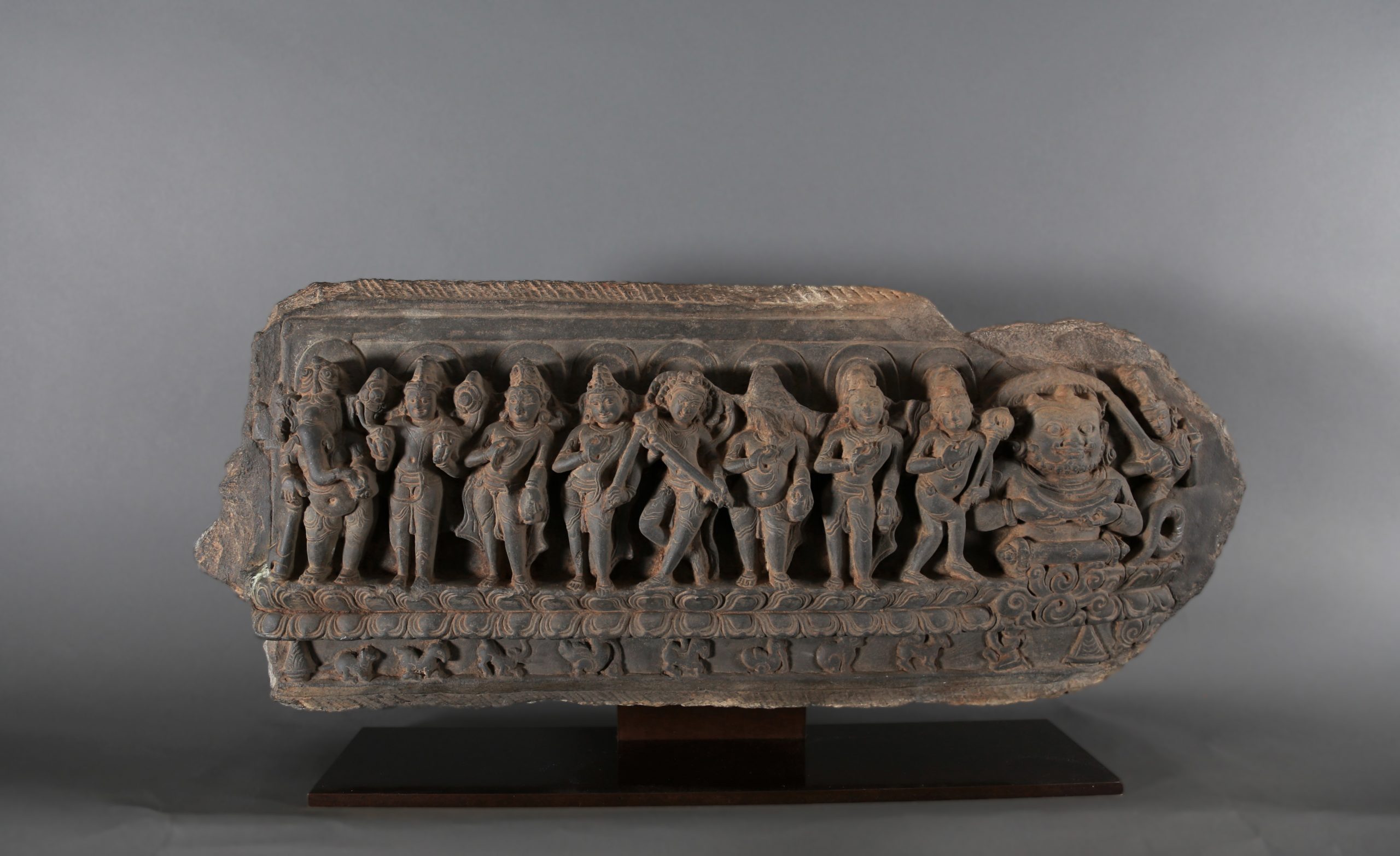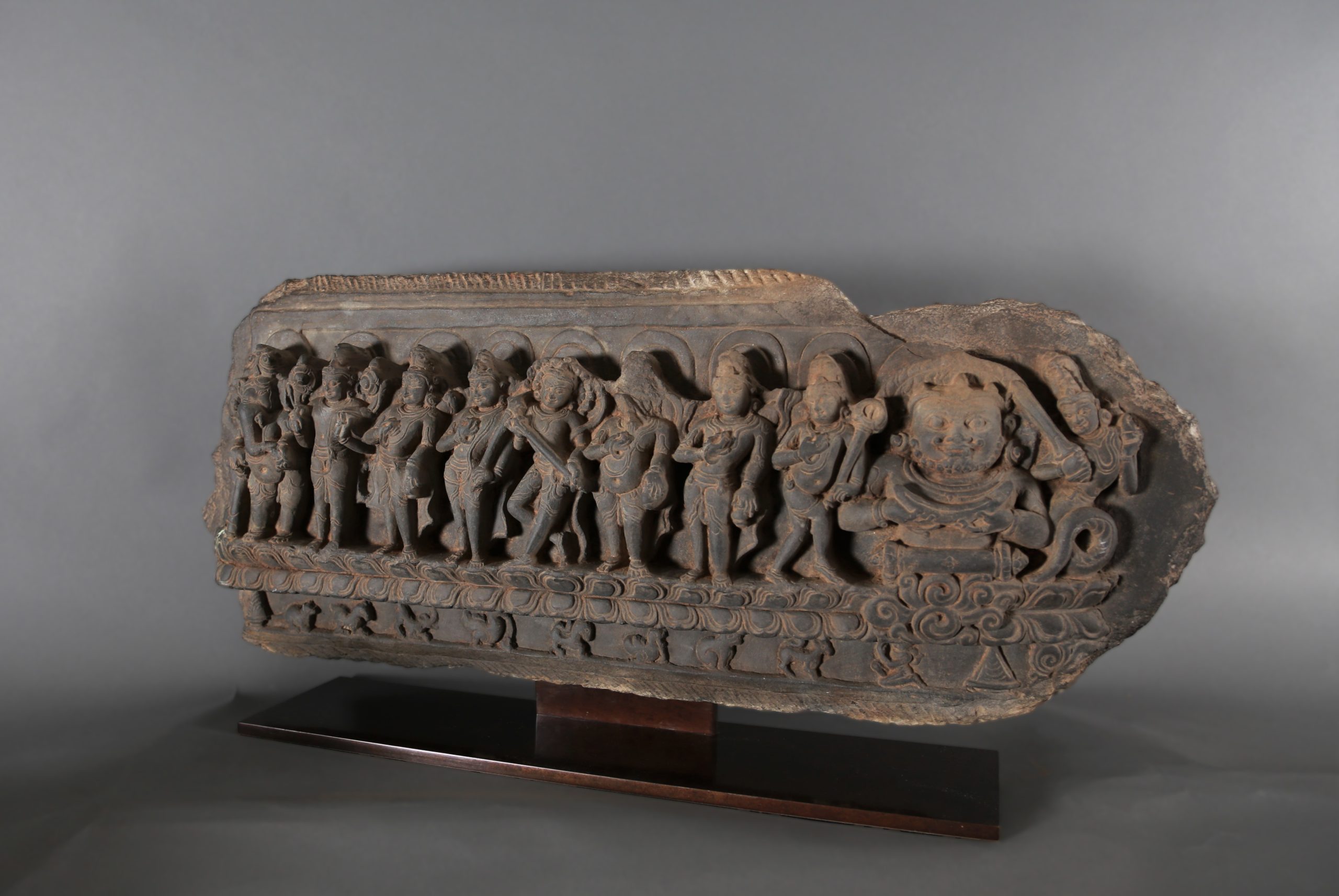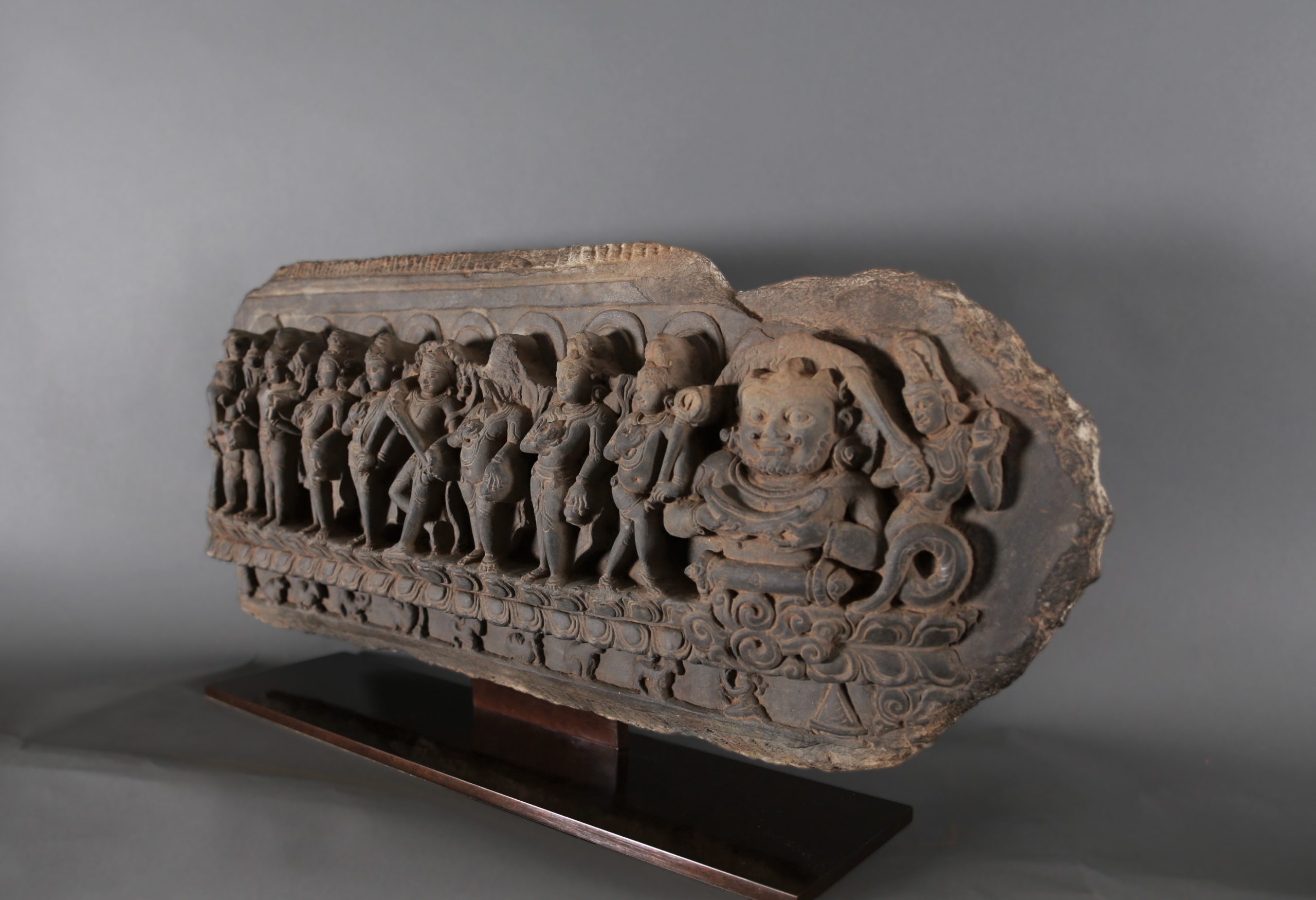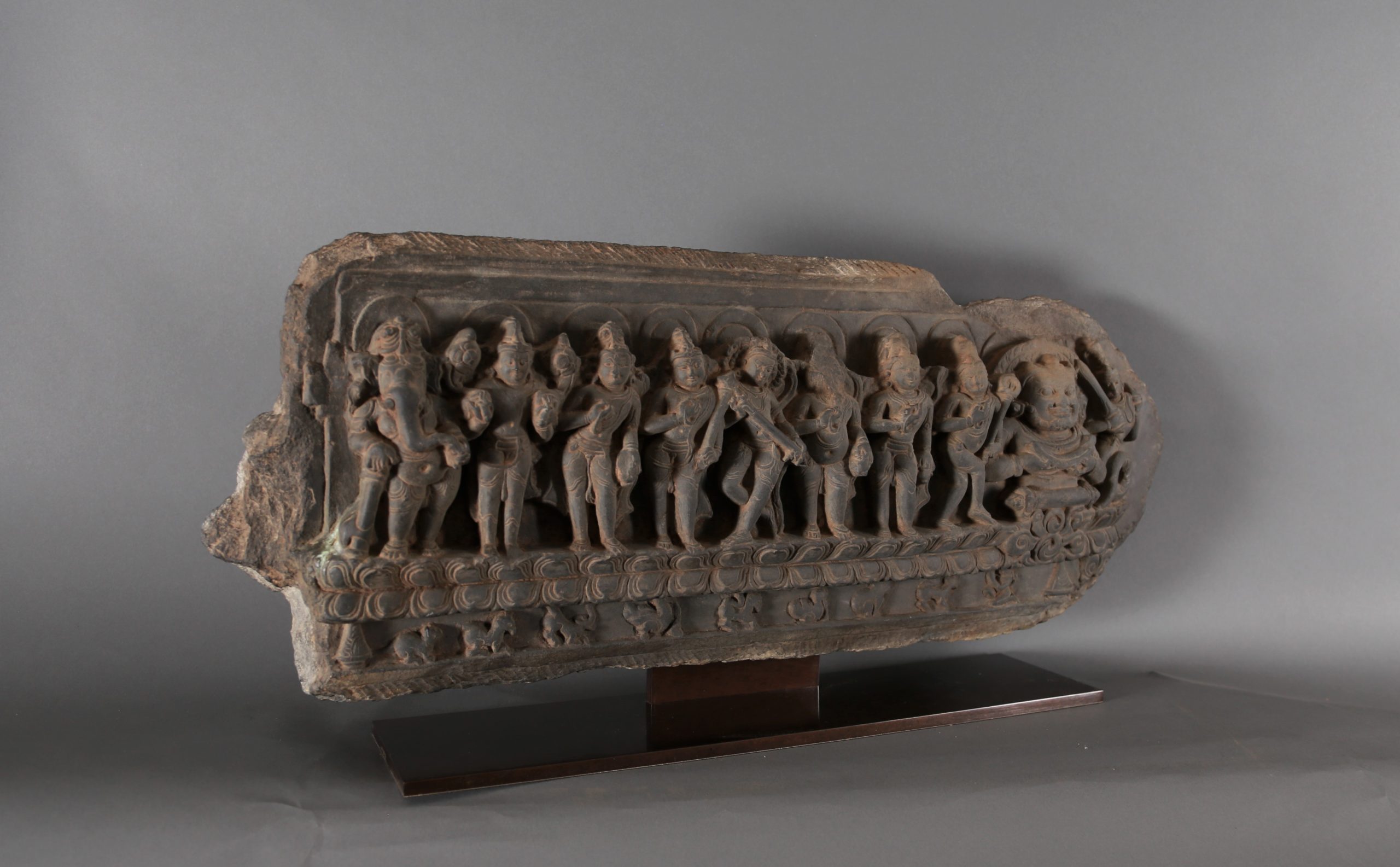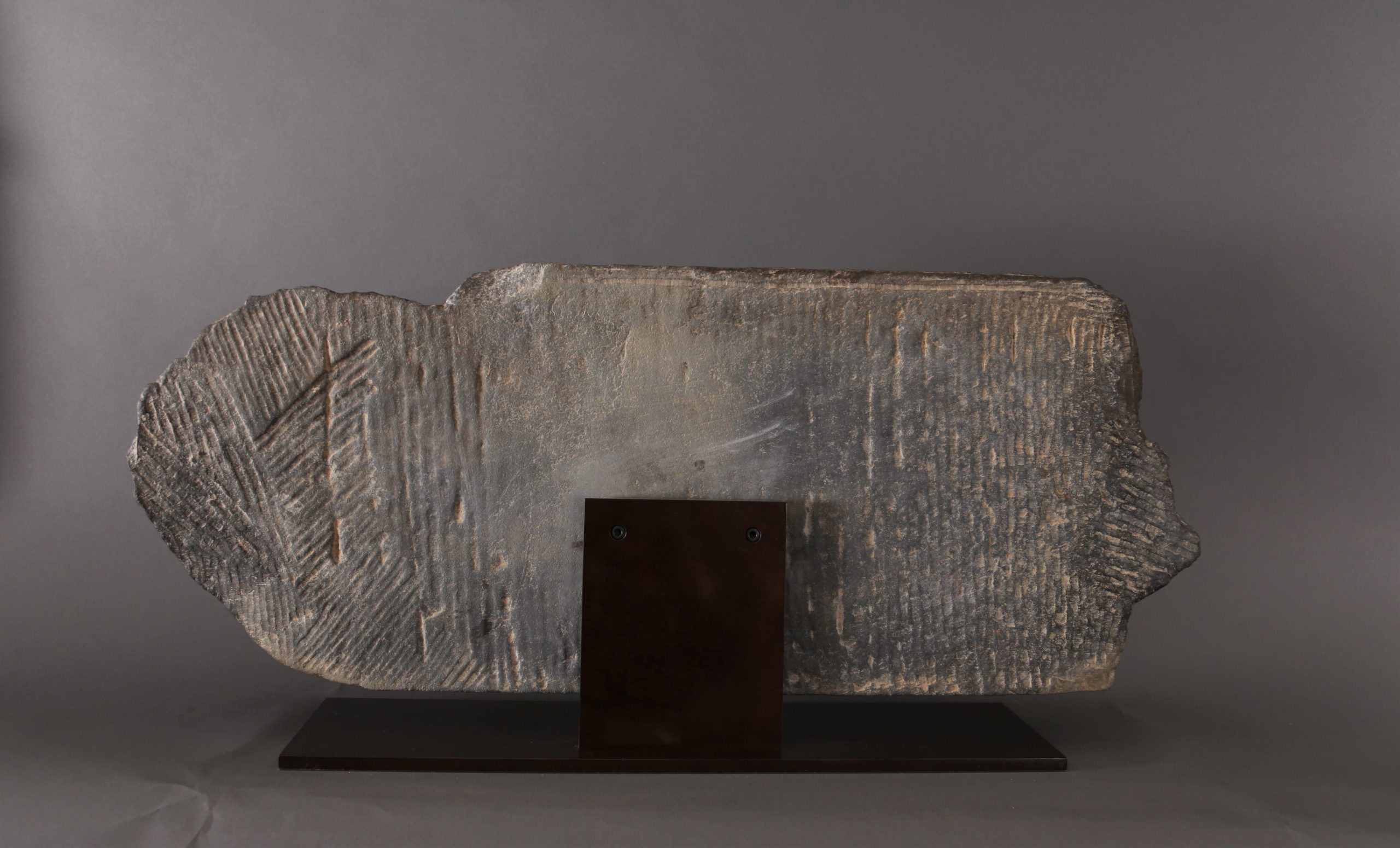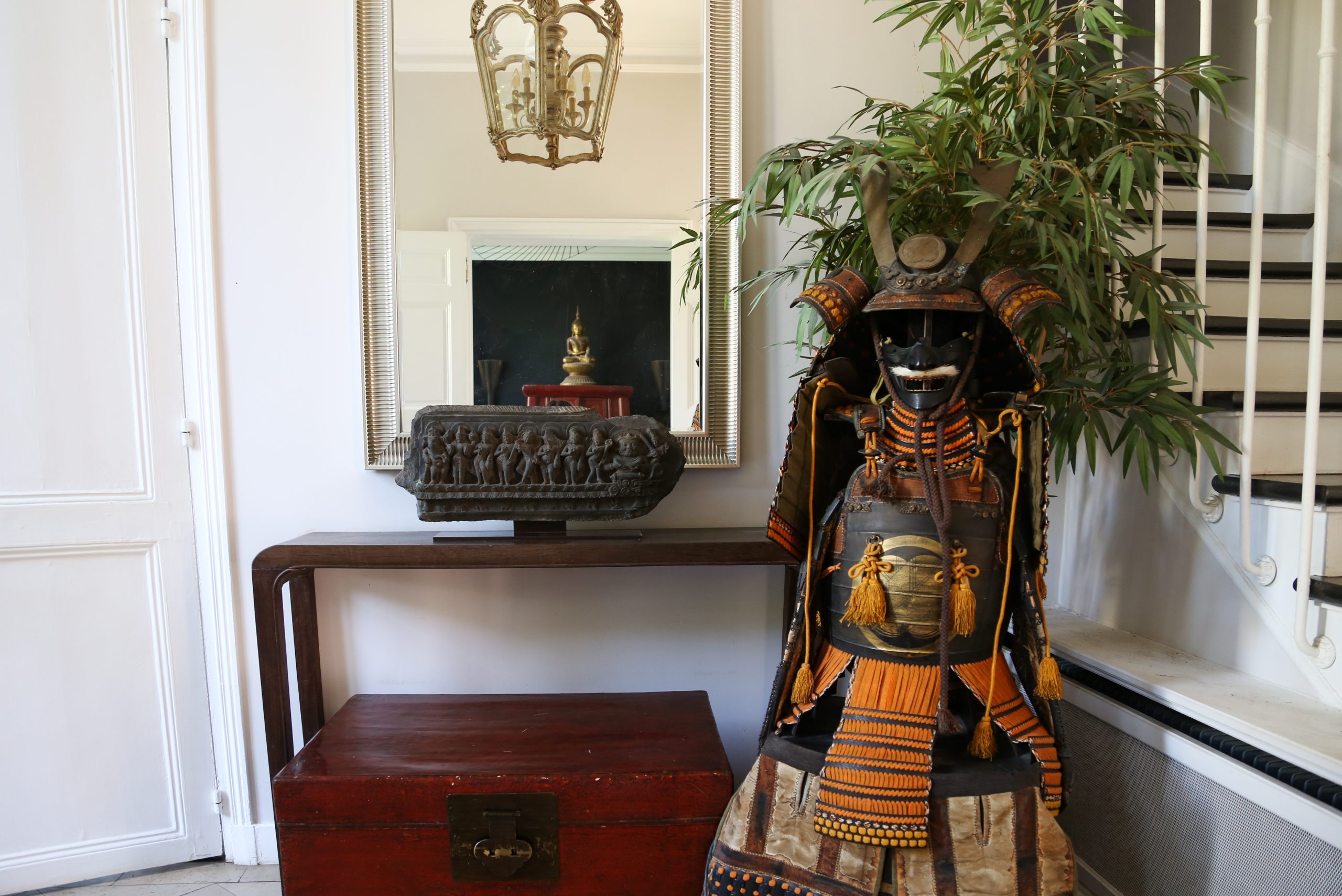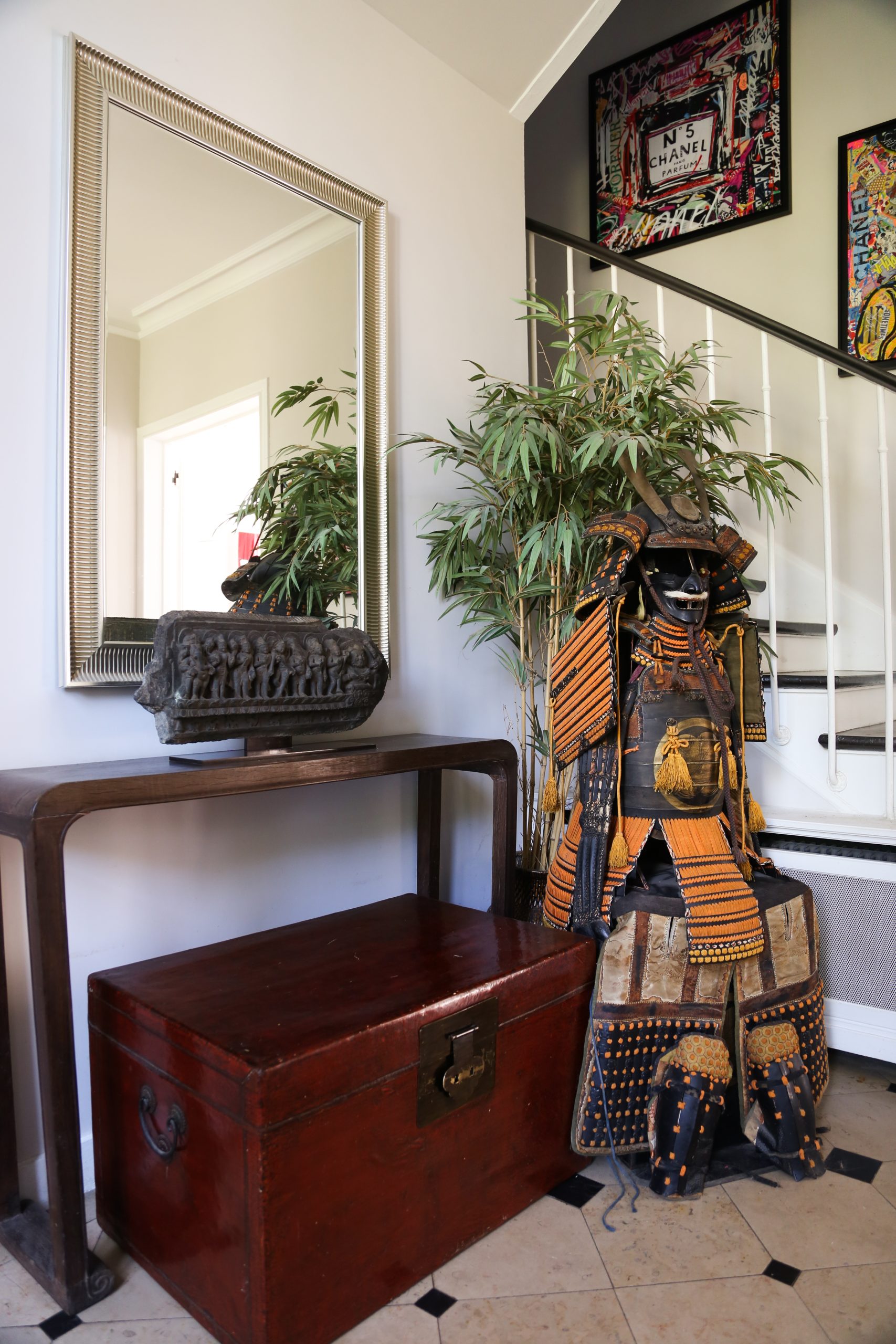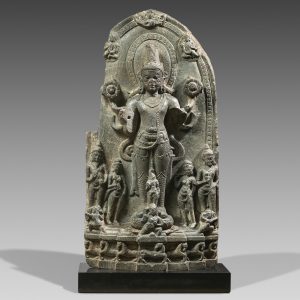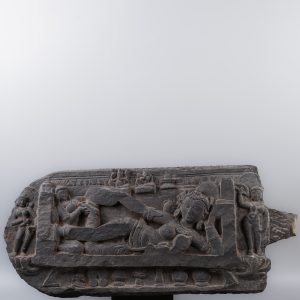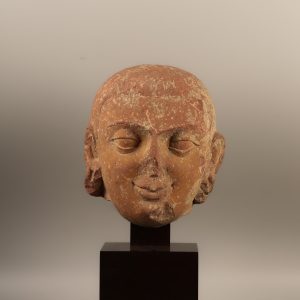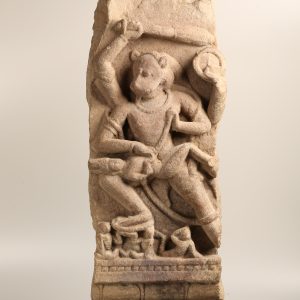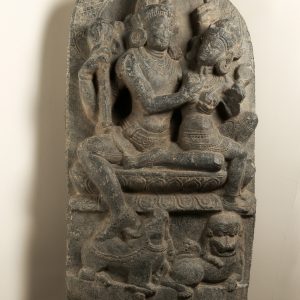The Navagrahā
35 000,00€
Black stone
Northeast India (Bihār, Bengal)
11th-12th century, Pāla period (8th-12th century)
H. 26 cm; L. 65 cm
Description
Provenance: Collection of a Japanese diplomat, acquired in Bangladesh, 1970s.
An elegantly modelled bas-relief
The Navagrahā (or the nine seizers) represent the deified planets, playing a role in the destiny of beings. The remarkable state of preservation of the work, coupled with the sculptor’s fine workmanship, makes it easy to distinguish the different deities. The varied positions and sinuous modelling give the bas-relief an elegant appearance, underlined by the refinement of the black stone. The faces of the divinities are modelled with surprising delicacy, with a sense of detail that testifies to the virtuosity of the sculptor. The asymmetry of the cut-out gives the whole a seductive dynamism.
The nine seizers
The iconography of the nine planets is a classic scheme of the Gupta period. The last two ‘seizers’ are actually astronomical phenomena: Rāhu is the deity of the eclipse and Ketu, with a serpent tail, is the comet. According to the legend of Rāhu’s origin, the gods churned the sea of milk to bring out the elixir of immortality. The demon Rahu, noticing this, tried to seize the elixir. Surya and Chandra, the sun and the moon respectively, denounced him to the god Vishnu, who punished him by beheading him with his cakra, a disc with a sharp edge. However, a drop of the elixir fell on Rahu’s tongue, and his head remained immortal. Driven by a desire for vengeance, the latter eternally pursues the sun and the moon, seeking to devour them. Since the demon has no body, the sun and moon keep escaping through its severed neck, causing the phenomenon of eclipses.
Benevolence and good fortune
This bas-relief was originally on the lintel of a sanctuary door. It is a symbolic place signifying good fortune. The nine deities are present, each characterised by a particular iconography (Surya, the sun god, holds blooming lotus flowers in his hands). Rahu is also present, symbolised by a headless body. Each deity is linked to a planet, a testament to the consistent astrological knowledge under the Pāla empire. This is the first time Hioco Gallery has offered for sale a work representing The Navagrahā.

